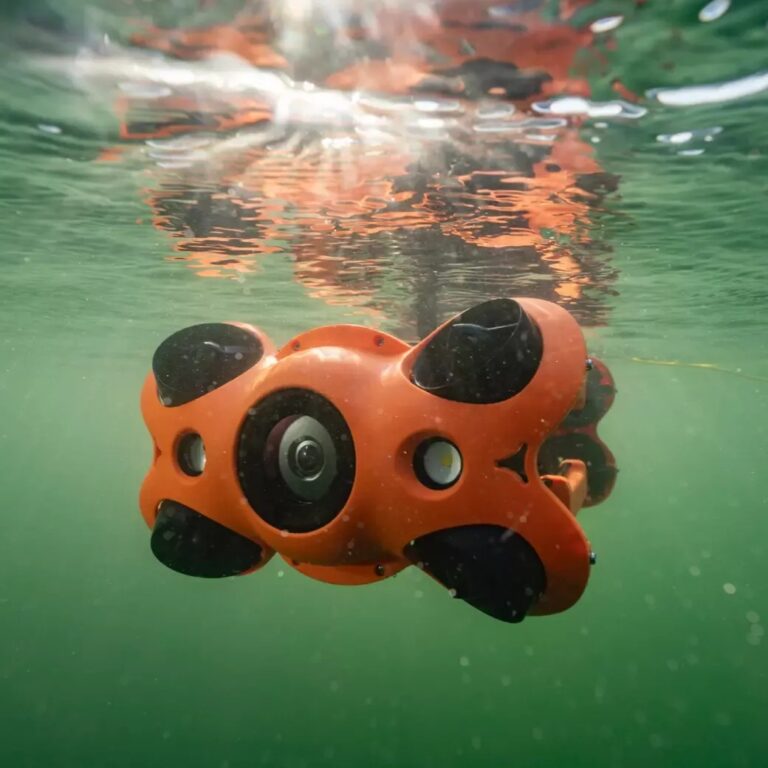Exploring the Underwater Frontier: Technology and Applications of Modern Drones
Underwater drones, also known as unmanned underwater vehicles (UUVs), represent a significant advancement in marine technology, offering safe and efficient ways to explore and monitor underwater environments. These remotely operated or autonomous vehicles are equipped with high-resolution cameras, sonar, and a variety of sensors that provide real-time data from depths and locations inaccessible or hazardous to human divers. Built with durable, pressure-resistant materials and advanced propulsion systems, underwater drones can navigate complex aquatic terrains, collect environmental data, conduct inspections of submerged structures, and assist in search and rescue missions.
Types of Underwater Drones and Their Key Features
Underwater drones come in several types, each designed for specific missions and environments. Understanding these types helps in selecting the right drone for particular underwater applications:
| Type | Description | Key Features | Typical Use Cases |
|---|---|---|---|
| Remotely Operated Vehicles (ROVs) | Tethered drones manually controlled by operators on the surface, used for inspections and intervention. | Real-time video feed, manipulators, high maneuverability | Infrastructure inspection, search and rescue, scientific research |
| Autonomous Underwater Vehicles (AUVs) | Untethered drones programmed to operate independently, following pre-set routes. | GPS navigation, long endurance, data logging | Ocean mapping, environmental monitoring, military surveillance |
| Gliders | AUVs that use buoyancy changes to glide through water, designed for long-duration missions. | Energy-efficient, long-range, low-speed | Oceanographic data collection, weather monitoring |
| Hybrid Models | Combine features of ROVs and AUVs, offering both remote control and autonomous operation. | Versatile control, flexible deployment | Complex missions requiring adaptability |
Key Features Shared Across Underwater Drones
Underwater drones are equipped with a range of advanced technologies that make them highly effective in challenging aquatic environments:
High-definition Cameras and LED Lighting: Equipped with ultra-HD cameras and powerful LED lights, these drones capture crystal-clear visuals even in murky or low-light conditions. The lighting systems illuminate dark underwater areas, ensuring no detail is missed during exploration or inspection.
Sonar and Navigation Sensors: Sonar technology enables precise mapping and obstacle detection, allowing drones to navigate safely in complex underwater terrains. Combined with sophisticated navigation sensors, these systems provide real-time positioning data, enhancing maneuverability and mission accuracy.
Robust, Pressure-Resistant Construction: Built from corrosion-resistant and high-strength materials, underwater drones withstand extreme pressure at significant depths and resist damage from harsh underwater conditions. This durability ensures reliable performance across various mission profiles.
Advanced Propulsion Systems: Featuring multi-directional thrusters and vectored propulsion, these drones maintain exceptional stability and agility. They can seamlessly maneuver through strong currents, tight spaces, and complex underwater structures without compromising control.
Battery-Powered or Tethered Operation: Depending on the mission, underwater drones offer flexible power options. Battery-powered models provide portability and ease of deployment for remote or extended operations, while tethered variants offer unlimited power supply and real-time data transmission for longer, controlled missions.
Together, these features empower underwater drones to perform sophisticated tasks ranging from scientific research to industrial inspections, delivering high-quality data and enhancing operational safety.
Applications of Underwater Drones

Underwater drones are widely used across various industries due to their safety, efficiency, and adaptability. In marine research and environmental monitoring, they collect valuable data on ecosystems and aquatic life without disturbing habitats. Industrial sectors rely on them for inspecting underwater infrastructure like pipelines, oil rigs, and bridges, reducing the need for risky human diving.
Search and rescue teams use underwater drones to locate missing persons and objects in challenging environments. Aquaculture benefits through monitoring fish health and net conditions while minimizing manual intervention. Additionally, defense agencies leverage these drones for surveillance and mine detection.
Their versatility and advanced technology make underwater drones invaluable tools for scientific, commercial, and security operations beneath the waves.
Functions of Underwater Drones
Functions of Underwater Drones
Exploration and Mapping: Underwater drones navigate and survey ocean floors and underwater structures using sonar and high-resolution cameras, creating detailed maps that reveal submerged terrains and habitats previously inaccessible.
Environmental Monitoring: They collect crucial data on water temperature, salinity, pollution, and marine life status, helping scientists monitor ecosystem health and track environmental changes over time.
Infrastructure Inspection: These drones perform thorough inspections of underwater assets such as pipelines, offshore platforms, and bridge foundations, identifying faults and corrosion early while reducing risks associated with human divers.
Search and Rescue: Equipped with live video feeds and maneuverable controls, underwater drones assist rescue teams in locating submerged objects or missing persons efficiently, even in challenging aquatic environments.
Conclusion
Underwater drones are poised to become even more integral to marine and industrial operations as their technology advances. Future trends include significant improvements in autonomy through AI-driven navigation and mission planning, allowing drones to perform complex tasks with less human intervention.
Battery life and energy efficiency are expected to continue increasing, enabling longer missions at greater depths. Electric propulsion systems will reduce noise and environmental disturbance, making drones ideal for sensitive ecological studies and offshore inspections. Additionally, enhanced sensor technologies will deliver higher-resolution imaging and more accurate data collection.
